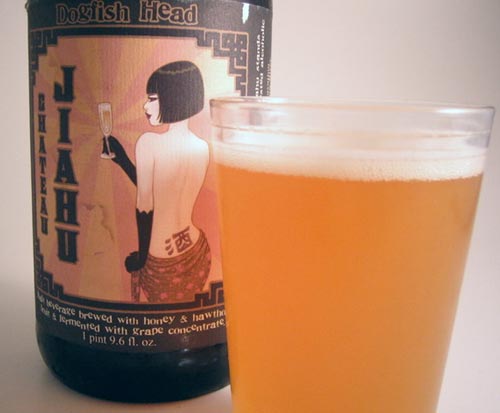
Although Panda Bear’s diet consists of 99% bamboo [1], I would like to assume (albeit incorrectly) that the other 1% of it’s nutritional intake is from the consumption of beer. As such, it only seems fitting that my first post to the Thirsty Panda Blog pertains to one of the most wonderful, thirst-quenching beverages known to mankind! About a year ago, I had a startling epiphany. Good tasting beer costs money, and as a college student, money is about as hard to come by as alcoholic beverages on the AU campus. For me, this posed a serious dilemma. I could either take up bank robbery, or stop drinking Great Lakes Winter Lager. Unable to find 11 people willing to knock over the Bellagio, Mirage, and the MGM Grand, I started doing research on how to brew my own beer at home. A year later and I’m proud to say that I operate a fully functional brewery out of my laundry room.
As a homebrewer, I have a deep respect for the science behind some of the most innovative beer in the world. That’s why I was intrigued when I read that the Dogfish Head Brewery is currently working on a beer that is based on traces of an ancient brew that was found on the inside of clay pots unearthed in China that date back nearly 9000 years [2]. Although the alcohol is long gone, it was inferred that the fruit juices and honey on the pottery would easily ferment in a temperate climate, based on a chemical analysis of the ingredients conducted by Patrick McGovern, andarchechemist at the University of Pennsylvania. His findings are published in the journal Proceedings of the National Academy of Sciences [3].
Based on these findings, the boys at Dogfish Head are working on a brew called Chateau Jiahu (the village the pottery was found in), using rice flakes and malted barley used in the mashing process to extract the fermentable sugars. Wild honey, grapes, hawthorn fruit and, chrysanthemum are then added to the boiling wort for flavor and further sugar extraction. Finally, sake yeast is added and the beverage is allowed to ferment. Look forward to a limited amount of bottles to be sold this summer.
[1]Ciochon, Russell L.; Eaves-Johnson, K. Lindsay (July 20, 2007). "The Curious Natural History of the Giant Panda Family". Scitizen. 2008-07-22.
[2]http://news.nationalgeographic.com/news/2005/07/0718_050718_ancientbeer.html
[3] McGovern et. Al. “Fermented beverages of pre- and proto-historic China” 2004 101:17593-17598.

I was deeply moved by the personal side of this post. While I prefer wine to beer, it's always great to see a fellow aficionado.
ReplyDeleteLet's just say I'm pretty sure there's a reason brewing has been around for so long.
And in a really nerdy way, the science of the fermentation process and the ingredients reacting together is fascinating to me.
Someone once told me (it was probably Dr. Green) that the Egyptians would let their beer ferment in an open pot sitting in the open air. There was some speculation on whether the extra microbes picked up from this practice affected the taste of the beer or not.
ReplyDeleteBelgian Lambic (sp?) beer is fermented in open attics to allow wild fungal spores to land in it. This is supposed to give these beers very interesting, regional tastes.
ReplyDeleteI've actually done some experimenting around with the Lambic style brews. I learned that you can cultivate your own wild strains of yeast with a little know-how and a lot of luck. They add a lot of character to the beer, and it's awesome to say that it's your personal strain (even if you got it by leaving the window open for a week). I made an experimental 1 gallon batch and it turned out really well. Unfortunately I lost the strain and I'm in the process of trying to catch a new one when the weather warms up.
ReplyDelete